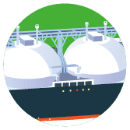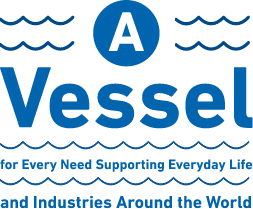
Tankers transport crude oil, which is the world’s primary energy source, refined petroleum products like gasoline,
and other liquid cargoes such as chemical products.
Tankers, of course, are built to transport oil, but can also serve as temporary offshore oil storage terminals,
because the tanker is composed of multiple tanks.



Highly Specialized Expertise
in Operations Tailored
to Cargo Characteristics
Speaking of tankers, let’s start with the ones that carry oil. Among the larger ones are those that transport crude oil, an energy resource that underpins the global economy and our everyday lives. “Product tankers” also play an essential role, carrying petroleum products such as gasoline, naphtha, kerosene, and diesel oil, and “chemical tankers” transport liquid chemical products including methanol, benzene, toluene, and alcohol.
Liquefied petroleum gas (LPG) tankers carry products such as propane and butane.
to Cargo Characteristics
-
![]() VLCC
VLCC -
![]() Crude oil storage tanks with a tanker in the background
Crude oil storage tanks with a tanker in the background
Crude oil has different properties, depending on where it is produced. For this reason, the cargo tanks on these vessels are normally separated into two or three blocks lengthwise and another several blocks crosswise. In most cases, the cargo is discharged by connecting the pipes of the vessel to the pipes of the terminal (sea berth) located in deep water far offshore.
-
Crude Oil Tankers
Petroleum products support our daily lives, and crude oil, the raw material for these products, is a critical energy source. Tankers have become larger to increase the efficiency of crude oil transport, and the first very large crude oil carrier (VLCC) made its debut in the 1960s. Other sizes of tankers are also available to meet global demand, contributing to a stable supply.
![]()
| Standard deadweight tonnage | LOA | |
|---|---|---|
| Very Large Crude oil Carrier (VLCC) | 200,000〜320,000 | About 333 〜 339.50m |
| Suezmax tanker | 140,000〜150,000 | About 274.30m |
| Aframax tanker | 80,000〜120,000 | About 245.50 〜 259.97m |
Chemical Tankers
-
![]() Product tanker (LRI type)
Product tanker (LRI type) -
![]() Chemical tanker
Chemical tanker
-
The basic hull structure and loading/discharging methods of product tankers and chemical tankers closely resemble those of crude oil tankers. However, product/chemical tankers typically have more cargo tanks, enabling them to co-load a wider variety of cargoes. Usually, each tank is equipped with respective pipelines and cargo pumps to prevent cross-contamination of different cargoes.
To prevent corrosion, cargo tanks are constructed using corrosion-resistant materials such as stainless steel, and special coatings are applied inside the tanks and pipelines.![]()
| Standard deadweight tonnage | LOA | |
|---|---|---|
| MR type (Medium range) | 25,000〜60,000 | About 160 〜 183m |
| LRI type (Large Range 1) | 55,000〜80,000 | About 228m |
| LRII type (Large Range 2) | 80,000〜160,000 | About 245m |
-
![]()
LPG Tanker
LPG TankerssVery Large Gas Carriers (VLGCs) are employed mainly for long-distance transport of Liquid Petroleum Gases (LPGs). As the boiling points of liquefied propane and liquefied butane are minus 42.2°C and minus 0.5°C respectively, the cargo tanks are made of a special steel that can withstand these ultra-low temperatures and the vessels feature a re-liquefaction system to keep the cargo temperature below the boiling point.
Another type of LPG tanker liquefies the cargo by pressurizing it instead of lowering the temperature. This method is used mainly on smaller vessels such as coastal ships. In addition, recent newbuilding VLGCs are all equipped with dual-fuel engines that can use LPG as fuel, reducing emissions of CO2, SOx, and PM.![]()
Equipped with Methanol-fueled Main Engine
Methanol tankers are a type of chemical tanker designed to transport methanol, a type of alcohol used as a raw material for formalin, fuel for alcohol lamps, and so on. In 2016, MOL introduced a methanol dual-fuel vessel, which can run on methanol or conventional fuel oil. As of 2023, the company operates five of the 25 methanol dual-fuel vessels in service worldwide.
Methanol, when used as marine fuel, reduces carbon dioxide (CO2) emissions by up to 15% and nitrogen oxide (NOx) emissions by up to 80%, compared to conventional fuel oil-powered engines. It can also significantly reduce emissions of sulfur oxides (SOx) and particulate matter (PM), since it does not contain sulfur. In addition, if methanol derived from non-fossil raw materials is used, GHG emissions can be further reduced.
In February 2023, MOL became the first company in the world to successfully reduce total GHG emissions during an 18-day transatlantic voyage to net zero* on a life cycle basis, from fuel production to consumption, by using bio-methanol fuel.
* Taking into account the fuel production process, it refers to the total amount of greenhouse gas (GHG) emissions as virtually zero on a life-cycle basis.

A methanol and heavy oil dual-fuel methanol tanker, emblazoned with “Powered by Methanol” on the hull



















